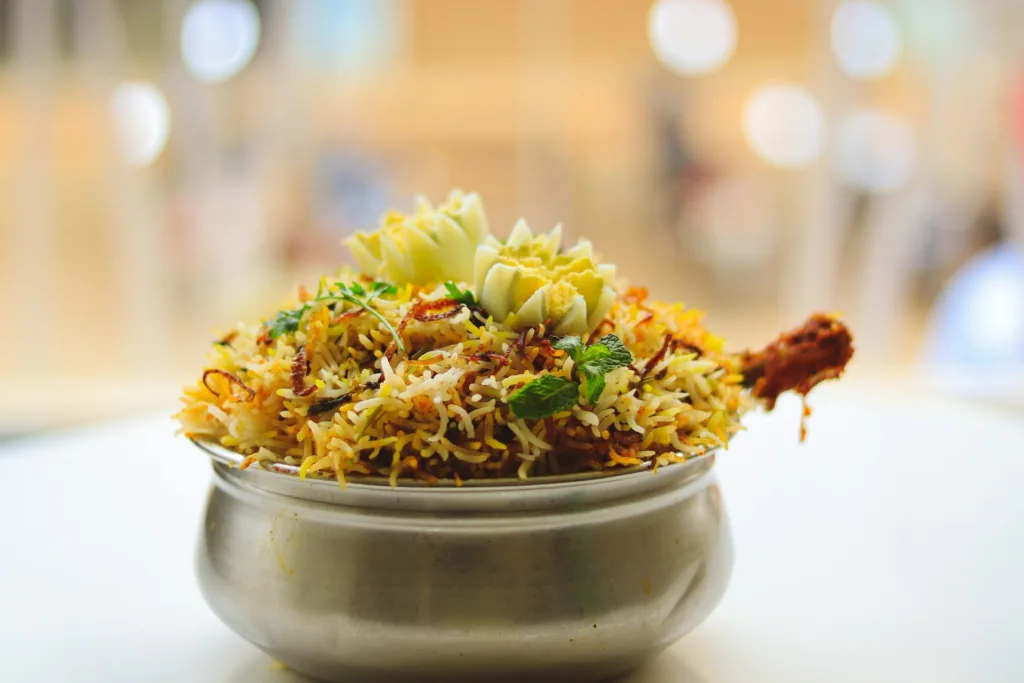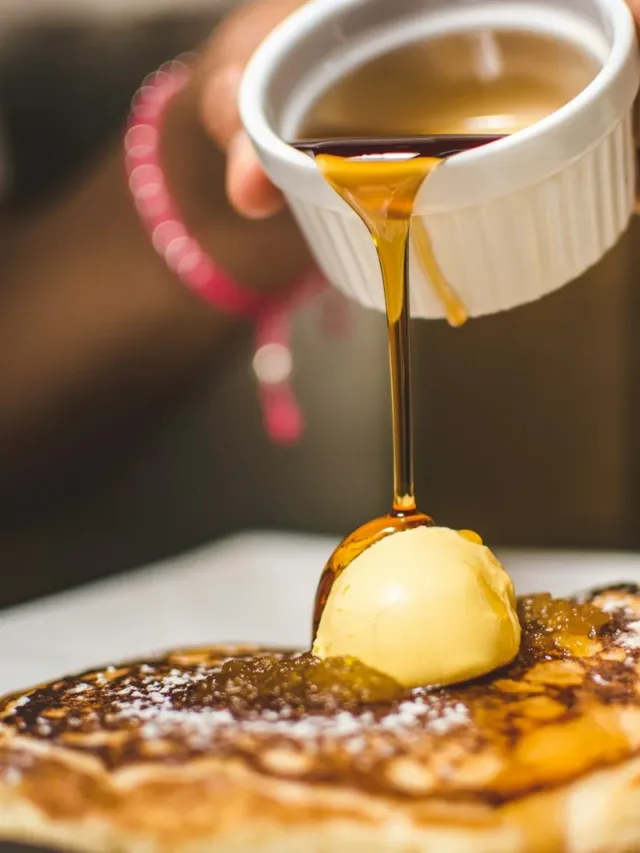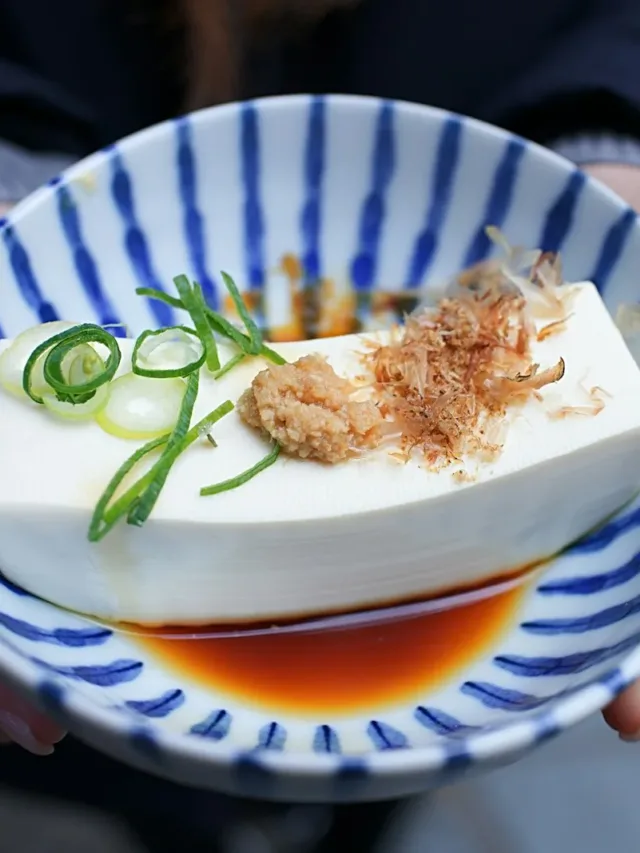What makes Indian Biryani so great?
Biryani is a beloved and iconic dish in Indian cuisine that has captivated taste buds around the world. This flavorful and aromatic dish consists of layers of fragrant basmati rice, tender meat (such as chicken, goat, or lamb), or vegetables, blended with a medley of spices, herbs, and seasonings. The rice is usually partially cooked separately, while the meat or vegetables are marinated with yogurt and a blend of spices like cumin, coriander, cinnamon, cloves, and cardamom. These layers are then brought together through a slow-cooking process, whether by dum method, purdah technique, or other regional variations, allowing the flavors to meld and infuse into every grain of rice.
Biryani is not just a dish; it’s an experience that stimulates the senses with its enticing aromas, harmonious flavors, and tantalizing textures. From the regal Hyderabadi biryani to the fragrant Lucknowi biryani, and the flavorful Kolkata biryani to the spice-infused Sindhi biryani, each regional variation showcases its own unique twist on this culinary masterpiece. Biryani embodies the rich culinary heritage and cultural diversity of India, making it a truly extraordinary and cherished dish.
Biryani is a highly revered and beloved dish that has earned its place as a culinary masterpiece. There are several factors contribute to what makes Indian biryani so great –
- Flavors: Biryani is known for its rich and complex flavors. The blend of aromatic spices, herbs, and seasonings like cinnamon, cardamom, cloves, cumin, saffron, and bay leaves create a symphony of taste that tantalizes the palate.
- Fragrance: The aroma of biryani is captivating. As it cooks, the fragrant spices infuse the rice, meat or vegetables, and other ingredients, filling the kitchen with an enticing scent that evokes anticipation and creates an immersive culinary experience.
- Layered and Infused: Biryani is a layered dish, with each layer contributing to the overall taste and texture. The rice is partially cooked separately and then layered with marinated meat, vegetables, or both. The flavors from the meat, spices, and herbs are absorbed by the rice during the final cooking process, resulting in a harmonious integration of flavors.
- Variety: Biryani comes in many regional variations across India and beyond. Each variation has its own unique combination of spices, cooking techniques, and ingredients, adding to the diverse and exciting world of biryani. Whether it’s the fragrant Lucknowi biryani, the spicy Hyderabadi biryani, or the flavorful Kolkata biryani, there is a biryani to suit every taste preference.
- Special Occasion Dish: Biryani is often associated with special occasions and celebrations. It is a dish that brings people together and creates a sense of communal enjoyment. The effort and time involved in preparing biryani make it a symbol of celebration, making it even more special when enjoyed with loved ones.
- One-Pot Wonder: Biryani’s appeal also lies in its convenience. Despite its complex flavors, it is a one-pot dish, making it relatively simple to prepare. The rice, meat or vegetables, and spices are cooked together, allowing the flavors to meld and infuse into every bite.
- Versatility: Biryani can be adapted to various dietary preferences and ingredient availability. Whether it’s meat biryani, vegetable biryani, or even seafood or egg biryani, the basic concept of layering flavors and spices with fragrant rice remains consistent.
- Nostalgia and Tradition: Biryani carries a sense of tradition and nostalgia for many. It has been passed down through generations, and the experience of enjoying a well-made biryani can evoke memories and emotions, connecting people to their roots and cultural heritage.
Biryani’s combination of enticing flavors, captivating aromas, layered textures, and cultural significance make it a truly exceptional dish that continues to captivate food lovers worldwide.

Biryani comes in many variations and all these unique ways of preparing biryani makes the Indian Biryani so great. Here, are some of the different ways to make the best biryani, featuring distinct regional variations and cooking techniques:
- Hyderabadi Biryani:
- Layered Cooking: Use the traditional dum method of cooking, where partially cooked basmati rice is layered with marinated meat (such as chicken or goat) and cooked on low heat, allowing the flavors to meld together. Fragrant spices like saffron, cardamom, and cloves are used to infuse the biryani with a distinct aroma.
- Meat or Vegetable Options: You can choose between chicken, goat, or vegetable variations, each prepared with a mix of spices, yogurt, and fried onions for added depth of flavor.
- Lucknowi (Awadhi) Biryani:
- Meat Selection: Opt for tender pieces of meat like lamb or goat. Marinate the meat with spices, yogurt, and papaya paste to help tenderize it.
- Cooking Technique: Use the purdah method, where the biryani pot is sealed with a layer of dough to trap the steam and flavors during the slow-cooking process. This technique ensures a moist and flavorful biryani.
- Fragrant Ingredients: Saffron, rose water, and kewra water are often used to enhance the aroma and add a touch of luxury to the biryani.
- Aromatic Rice: Use long-grain Basmati rice flavored with whole spices like cinnamon, cardamom, and bay leaves.
- Potato and Egg Inclusion: Kolkata biryani typically features pieces of marinated meat (often goat or chicken), along with potatoes and boiled eggs. The meat, potatoes, and eggs are cooked separately and then layered with rice for a flavorful combination.
- Subtle Spices: The spices used in Kolkata biryani are relatively milder compared to other variations, allowing the flavors of the meat and other ingredients to shine.
- Malabar Biryani:
- Fragrant Rice: Use a short-grain rice variety like Jeerakasala or Khaima rice for the base. These rice types have a unique aroma and slightly sticky texture that enhances the biryani.
- Coconut Influence: Incorporate grated coconut, coconut milk, or coconut oil into the marinade or rice preparation to infuse the biryani with a distinct coastal flavor.
- Local Ingredients: Malabar biryani often includes the use of regional spices like black pepper, fennel seeds, and curry leaves to give it a distinct taste profile.
- Sindhi Biryani:
- Layered Meat and Rice: Use marinated chicken or goat meat, along with partially cooked rice, to create layers in the biryani pot.
- Yogurt-based Marinade: The meat is marinated in a tangy mixture of yogurt, spices, and fried onions, giving it a rich and flavorful taste.
- Aromatic Spice Blend: Sindhi biryani often includes a unique blend of spices like cumin, coriander, cinnamon, cloves, and star anise, providing a distinct flavor profile.
These are just a few examples of the diverse ways biryani can be prepared. Experimenting with different techniques and regional variations can help you discover your own favorite style of biryani.







